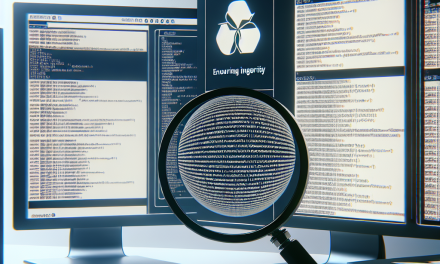In the ever-evolving landscape of cybersecurity, vigilance is paramount. As Linux servers become increasingly popular, they also attract unwanted attention from malicious actors. Rogue services—unauthorized applications or services running on your server—pose significant threats to security, performance, and data integrity. In this comprehensive guide from WafaTech, we’ll discuss the methods and tools to identify and mitigate rogue services on your Linux server.
What Are Rogue Services?
Rogue services can be defined as any unauthorized application or service running on your server, including:
- Malware: Hidden programs executing malicious tasks.
- Unapproved applications: Software installations that haven’t been authorized by system administrators.
- Backdoors: Services installed by attackers to regain access after a breach.
Understanding and identifying these rogue services is crucial for maintaining the security of your system.
Why You Should Care
Rogue services can lead to:
- Data Breaches: Unauthorized access to sensitive information.
- Performance Issues: Resource-heavy applications can slow down your server.
- Compliance Violations: Non-compliance with security regulations can have legal repercussions.
- Reputation Damage: A breach can tarnish your organization’s reputation.
Identifying Rogue Services
Identifying rogue services requires a multi-faceted approach. Here are some effective methods to pinpoint unauthorized services on your Linux server.
1. System Audit: Check Running Services
One of the first steps in identifying rogue services is to view all currently running services. The following commands can help you gather this information:
a. Using systemctl
The systemctl command is the most common way to interact with services in modern Linux distributions.
bash
systemctl list-units –type=service –all
Examine the output for any unknown or suspicious services.
b. Using service
For systems that utilize the init.d system:
bash
service –status-all
This will display a list of services and their status. Look for services that seem out of place.
2. Network Monitoring: Identify Open Ports
Establishing which services are listening for connections is vital. Use the netstat or ss command to view open ports and associated services.
Using netstat
bash
netstat -tuln
Using ss
bash
ss -tuln
Review the listed ports and verify whether they correspond to legitimate services installed on your server.
3. Process Inspection: Verifying PID and Executable
Once you’ve identified running services, you’ll want to dig deeper into the processes. Use the ps command:
bash
ps aux
Cross-reference the list of running processes with known and approved services. If a process looks abnormal, investigate further.
4. Log Files Examination
Check log files for unusual activity or unauthorized access. Review key logs located in /var/log/, such as:
/var/log/auth.log: Contains authentication logs./var/log/syslog: Contains system-wide logs./var/log/messages: General system messages.
Look for entries that may correspond to the rogue services or unusual login attempts.
5. Using Security Tools
Several security tools can automate the identification of rogue services:
a. Chkrootkit
This tool checks for rootkits that may indicate unauthorized services.
bash
sudo chkrootkit
b. rkhunter
Another excellent tool for identifying rootkits and potential rogue services.
bash
sudo rkhunter –check
c. Lynis
Lynis is a security auditing tool that provides a comprehensive scan of your system for security issues, including rogue services.
bash
sudo lynis audit system
Mitigating Rogue Services
Once identified, it’s crucial to take steps to mitigate rogue services effectively.
-
Terminate Unauthorized Services: Use
systemctl stop <service_name>orkill <PID>to stop rogue processes. -
Remove Malicious Software: If a rogue service is identified, remove it using your package manager (e.g.,
apt,yum). -
Strengthen Security Posture:
- Implement a firewall (e.g.,
iptables,ufw) to limit access to only necessary ports. - Regularly update your system and applications to patch vulnerabilities.
- Employ user authentication measures to restrict access to sensitive areas.
- Implement a firewall (e.g.,
- Regular Monitoring: Set up periodic audits and monitoring to proactively detect rogue services in the future.
Conclusion
Identifying and mitigating rogue services is a crucial aspect of maintaining a secure Linux server. By leveraging the tools and methods outlined in this guide, you can protect your system from unauthorized access and mitigate potential threats. Remember, cybersecurity is an ongoing process—stay vigilant, keep your server updated, and always be on the lookout for suspicious activity. With these practices, you can ensure your Linux server remains secure and reliable.
For more insights into Linux security and best practices, be sure to check out other articles on the WafaTech Blog!





